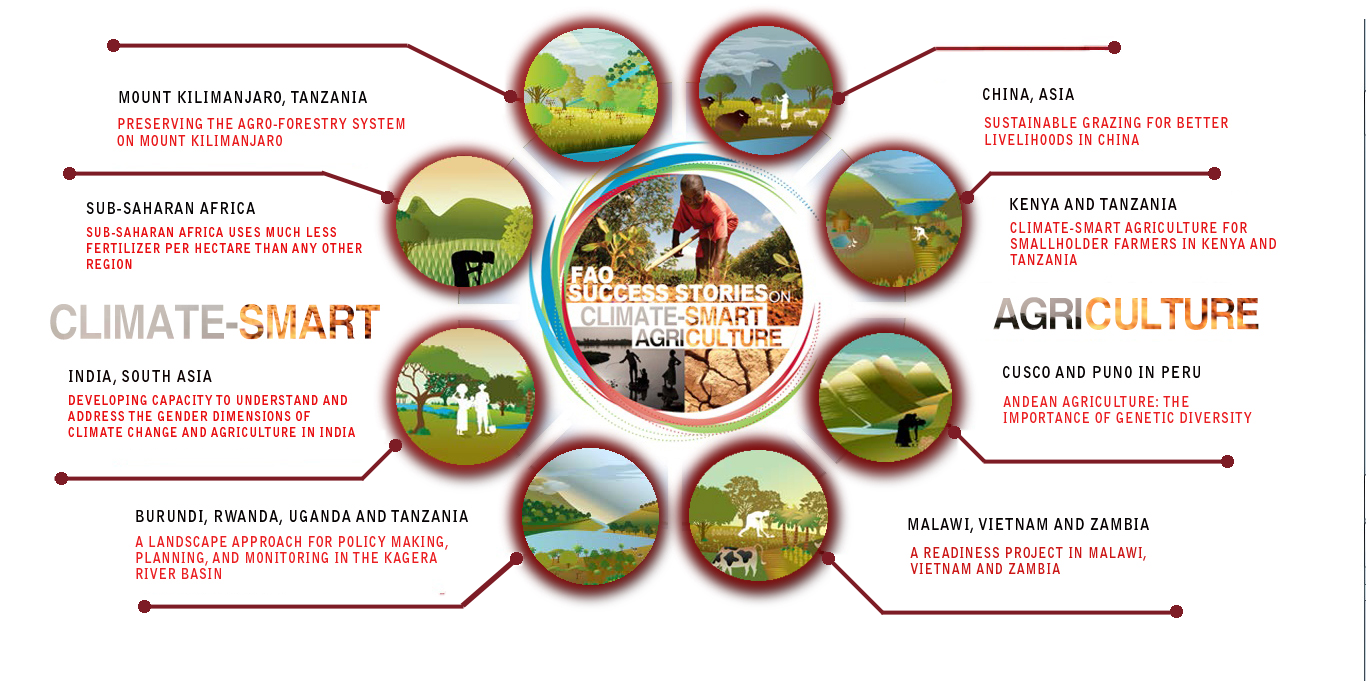
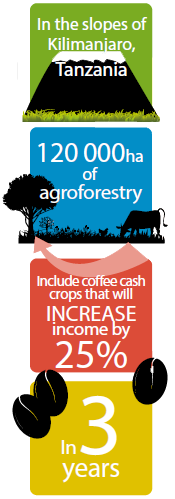 KIHAMBA AGRO-FORESTRY IN MOUNT KILIMANJARO
KIHAMBA AGRO-FORESTRY IN MOUNT KILIMANJARO
The 800-year-old “Kihamba” agroforestry system covers 120,000 hectares of Mount Kilimanjaro in Tanzania
Preserving the multi-layered vegetation structure is a priority for the residents. Trees and dense vegetation help considerably to ensure that Mount Kilimanjaro can remain the “water tower” for the region.
Because of the high quantities of biomass it produces and its capacity to recycle organic matter on farms, the agroforestry system contributes significantly to carbon storage
Rethinking sources of cash income after decline of coffee in 1990s was a major agenda for people. Activities were piloted in 660 households to enhance farmers’ cash income while preserving the ecological and social integrity of the Kihamba system. The coffee cash crop is now expected to increase income by 25 per cent
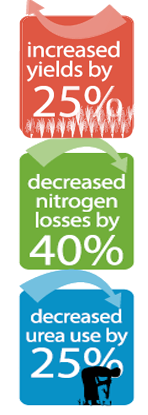 FERTILISER-WISE PRACTICES IN AFRICA
FERTILISER-WISE PRACTICES IN AFRICA
Soils in Africa are relatively low in organic carbon, which is related to the amount of organic matter in the soil released from crop residues, decomposing plants, tree leaf litter, and other sources. Such soils are especially vulnerable to nutrient depletion when traditional fallows are shortened or eliminated. The combined use of judicious amounts of mineral fertilizers and soil amendments such as manure, crop residues, compost, leaf litter, lime, or phosphate rock has shown results in the region
For example, in West Africa, adoption of integrated soil fertility management across more than 200,000 hectares resulted in yield increases of 33–58 per cent over a four-year period, and revenue increases of 179 per cent from maize and 50 per cent from cassava and cowpea
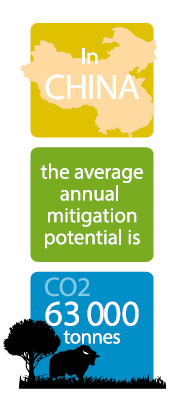 SUSTAINABLE GRAZING FOR BETTER LIVELIHOODS IN CHINA
SUSTAINABLE GRAZING FOR BETTER LIVELIHOODS IN CHINA
High carbon sequestration underpins a project to restore degraded grazing lands in Quinghai province of China. The proposed project would also significantly enhance the productive potential of the grazing land.
In the project yak- and sheep-herding households will select a combination of management options related to grazing intensity, grass cultivation and animal husbandry. The project’s goal is to restore degraded grazing land and sequester soil carbon through cost-effective restoration measures. The average annual mitigation potential in the first 10 years of the project is estimated at 63,000 tonnes of CO2 equivalent per year.
Improving soil moisture and nutrient retention in soils, grassland restoration plays an important role in building resilience to climate change
 CLIMATE-SMART AGRICULTURE FOR SMALLHOLDER FARMERS IN KENYA AND TANZANIA
CLIMATE-SMART AGRICULTURE FOR SMALLHOLDER FARMERS IN KENYA AND TANZANIA
Climate smart agriculture in the African countries and its assessment are based on participatory assessments and consultative processes at multiple levels
Some 2,500 farmers in Tanzania and Kenya – 46 per cent of whom are women, received training
Result: 300 energy-efficient cooking stoves, 44 tree nurseries, 33,500 tree seedlings planted, 2 biogas digesters to produce renewable energy from cow manure
 LANDSCAPE POLICY AND PLANNING FOR KAGERA RIVER BASIN
LANDSCAPE POLICY AND PLANNING FOR KAGERA RIVER BASIN
The Kagera river basin is shared by Burundi, Rwanda, Uganda and the United Republic of Tanzania. T he natural resources of the Kagera river basin support the livelihoods of some 16.5 million people. Decision makers in the four countries are assisted in analysing what type of land degradation processes are occurring, including those exacerbated by climate change. The goal of the project that started in April 2010 is to adopt an integrated ecosystems approach for the management of land resources
After being introduced to better farming methods, a farmer in Uganda who owns 20 beehives, one acre (0.4 hectare) fruit trees, one acre pastures and 10 heads of cattle is sustainably managing his land. He also increased his income from milk while planting about 10,000 trees
Additional activities have enabled farmers to plant over 150,000 trees on bare hills
After being introduced to better farming methods, a farmer in Uganda who owns 20 beehives, one acre (0.4 hectare) fruit trees, one acre pastures and 10 heads of cattle is sustainably managing his land. He also increased his income from milk while planting about 10,000 trees Additional activities have enabled farmers to plant over 150,000 trees on bare hills
 ANDEAN AGRICULTURE PROTECTS GENETIC DIVERSITY
ANDEAN AGRICULTURE PROTECTS GENETIC DIVERSITY
Up to 177 varieties of potato have been domesticated for centuries in the valleys of Cusco and Puno in Latin America’s Peru
3,500 families organized in 18 rural communities are helping to conserve these 177 varieties.
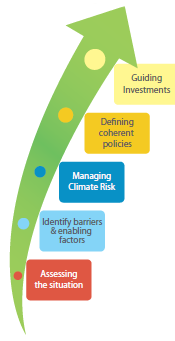
 According to the agency, women make up 43% of the agriculture workforce in developing countries. But, those in forestry, fishing and agriculture receive just 7% of total agriculture investment
According to the agency, women make up 43% of the agriculture workforce in developing countries. But, those in forestry, fishing and agriculture receive just 7% of total agriculture investment